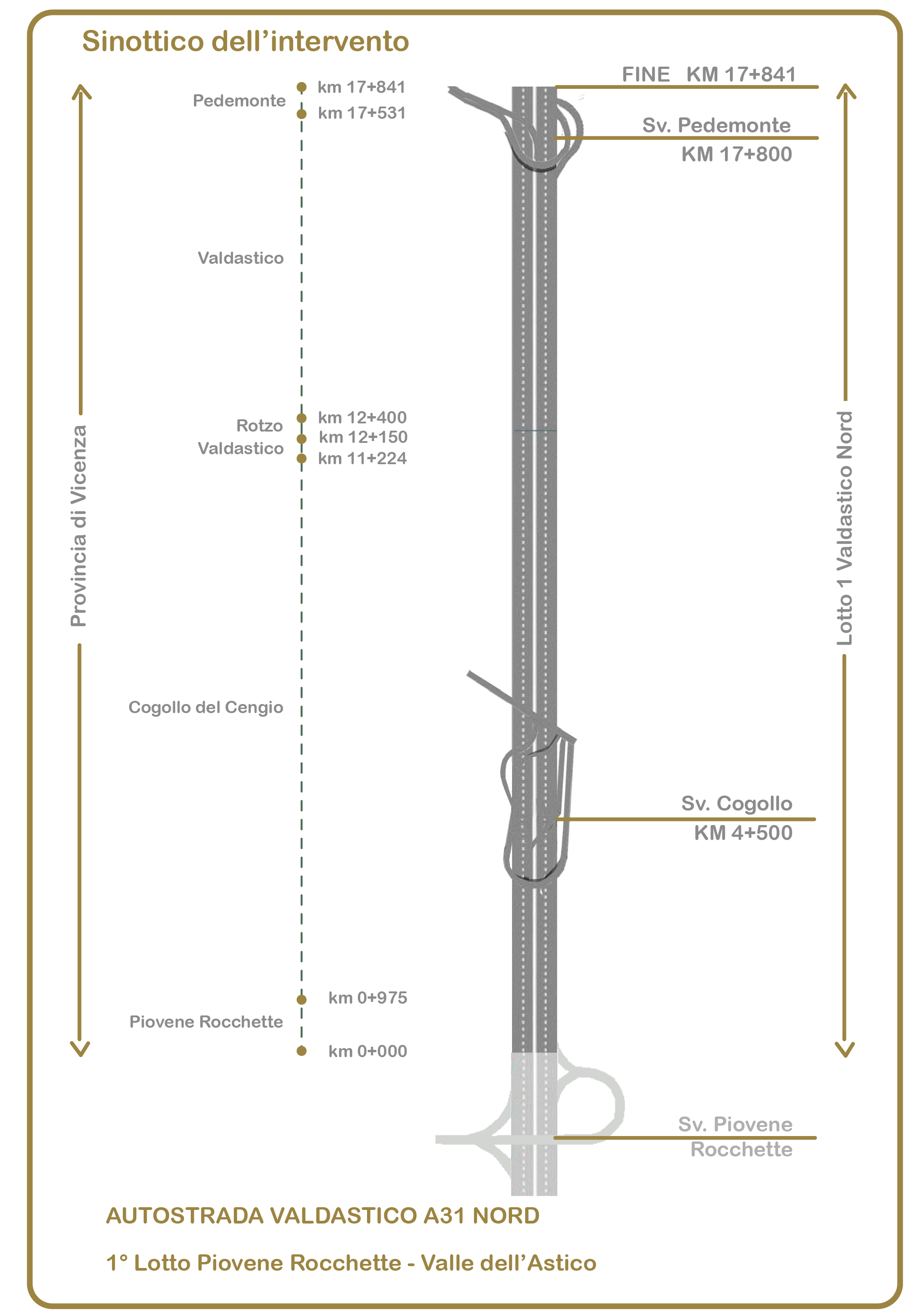The layout for the first functional Lot of the motorway begins where the current A31 motorway ends at Piovene Rocchette, in the province of Vicenza, and will end in the Municipality of Pedemonte with the junction for the Astico Valley/Pedemonte.
The first lot will be developed over approximately 17.8 km and will be linked to the ordinary road network via two junctions:
- Cogollo del Cengio Junction
- Astico Valley/Pedemonte Junction, at the end of the Lot.
As this stretch of motorway will run through a mountainous area, the project involves a lot of tunnels and viaducts compared with the part running along the ground; more precisely:
- approx. 1.3 km of viaducts;
- approx. 13.3 km of tunnels;
- approx. 3.2 km of road built on embankments or in cuttings.
Overall, 74% of this initial section of motorway has been designed and will be built in tunnels. This represents an important project, designed to reduce to a minimum any environmental impacts and the effects of traffic on the surrounding area.
DESIGNS, MATERIALS AND TECHNOLOGY TO GUARANTEE THE SAFETY OF ROAD USERS
The entire stretch of motorway is protected by metal safety barriers that are able to absorb even the most violent collisions, as we have chosen safety devices that are either in line with or that outperform applicable legal requirements.
Metal safety barriers (guardrails) are installed on bridges and overpasses and along stretches of road built on embankments or in cuttings.
The road surface along the entire stretch of motorway allows water to drain away and for noise to be absorbed, thanks to the high quality of aggregates and bitumen used, leading to better performance in terms of safety.
The technological systems have been designed to create extreme efficiency, with a particular focus on the functionality of all types of equipment in use, both along the carriageways and inside the tunnels: the systems that have been chosen are flexible, reliable, easy to maintain and can adapt to the evolving needs of modern motorway users.
Considering that this stretch of motorway passes through a mountainous area, preference is given to those technological systems which are able to better guarantee the safety of motorway users through:
- sensors, detectors and cameras, which are directly and constantly connected to the control centres in Verona and Pedemonte;
- SOS stations; variable message signs (VMS);
- devices to record traffic and weather conditions;
- automatic incident detection cameras (AID);
- CCTV in the area around SOS stations and other particularly critical points along the motorway;
- single-frequency radio connections using dedicated channels for institutional services and the Motorway Police, with the possibility to extend these also to the fire brigade.
The system architecture of the telematic network guarantees that any future services and technological developments can be implemented at any given moment, such as SMART ROADS, with a view to always being able to provide services that meet the evolving needs of road users.






